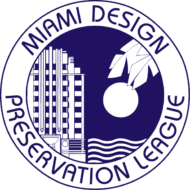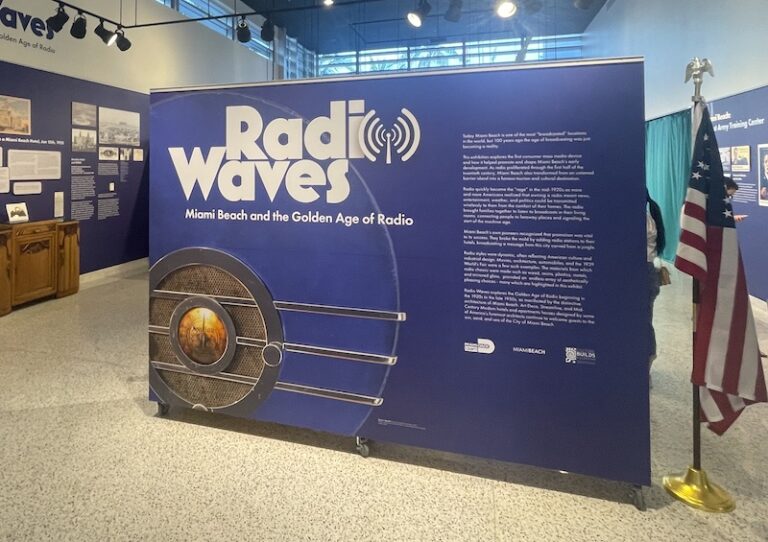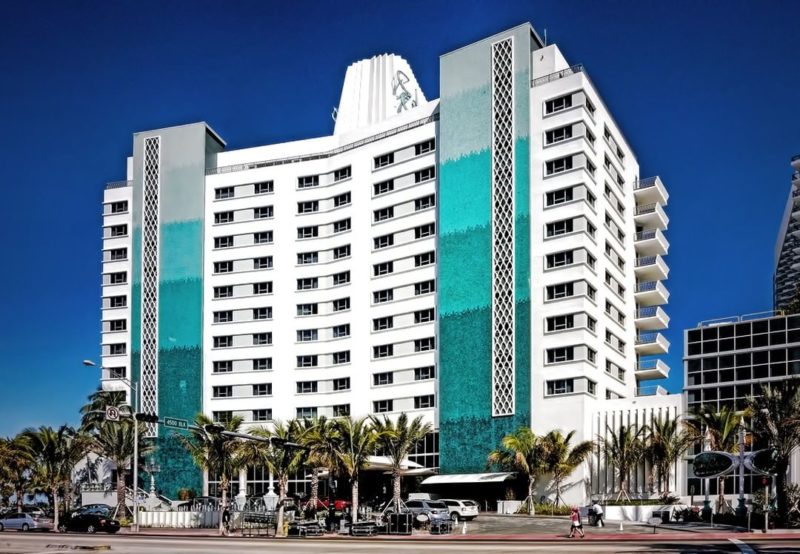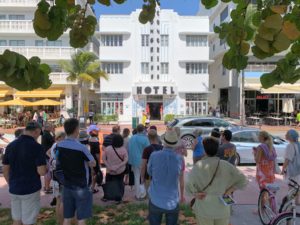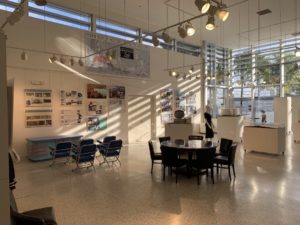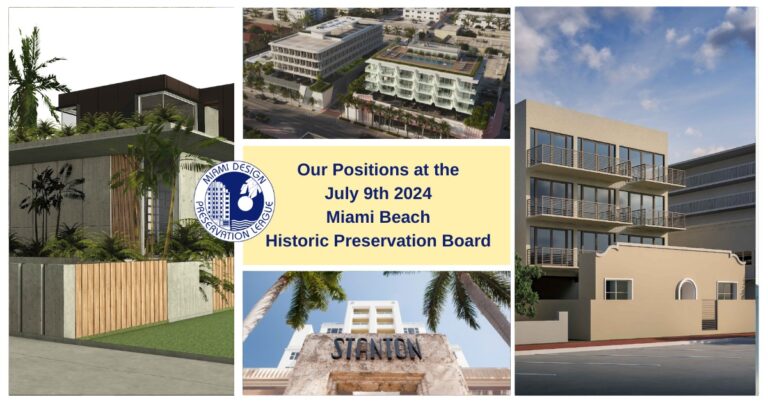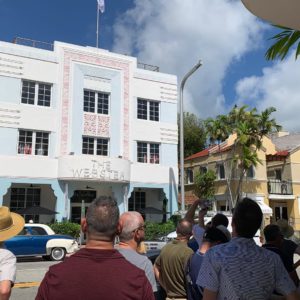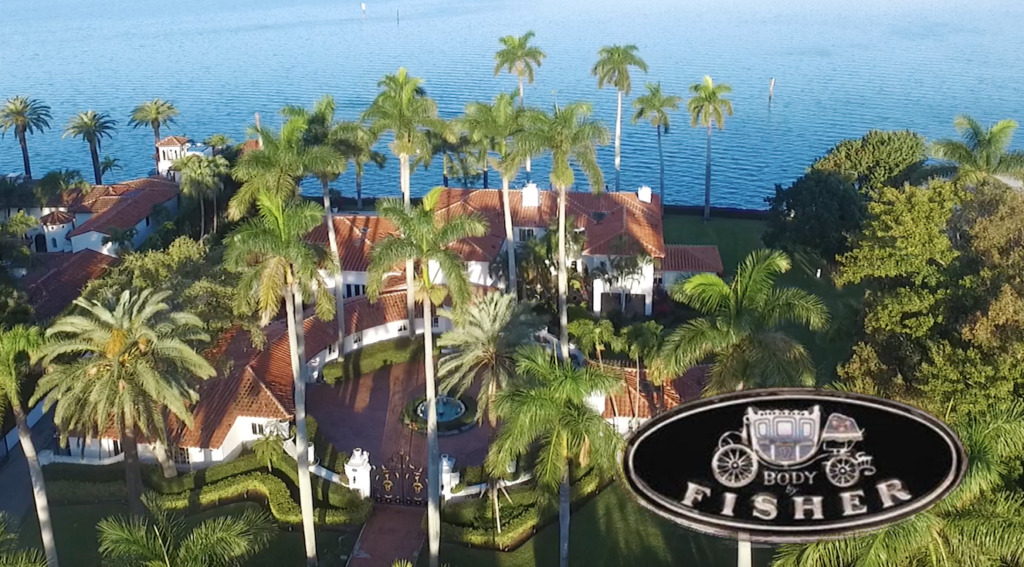
Sign the Petition to Save 1753 North View Drive: Click Here
Address: 1753 North View Drive
Current Owners: Sunset Island Land Trust, Alex Kleyner and Diana Ulis, purchased home in September 2020. Mr. Kleyner is CEO of National Debt Relief.
Status: Plans submitted for total demolition of pre-1942 architecturally significant home at the Miami Beach Design Review Board
Original Home Architect: Carlos Schoeppl
Year Built: 1937
Proposed New Architect: Kobi Karp
Contributors: David McKinney, M.A., Ph.D., Architectural History, University of Virginia and Daniel Ciraldo, Executive Director, Miami Design Preservation League
Background: MDPL has advocated for several years to better protect single-family homes that lie outside of historic districts. This new series will shine a light on historically and architecturally significant homes at risk of demolition. Our hope is that greater public awareness will help ensure such homes are better protected.
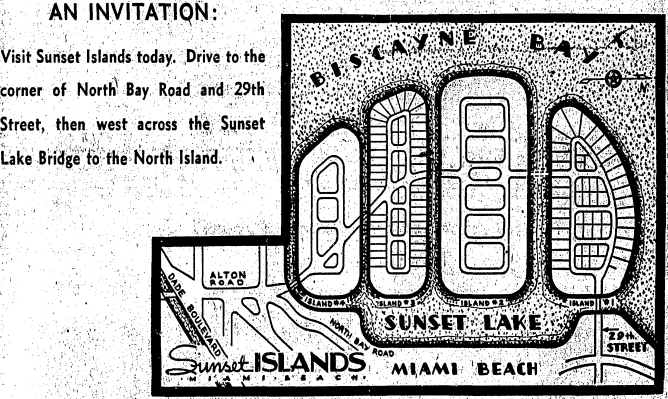
Introduction

The residence at 1753 North View Drive on Sunset Island number 1 was designed by Carlos B. Schoeppl in 1937 for W. A. Fisher, president of the Fisher Body Corporation and vice president of General Motors.

Architectural Significance: An extraordinary example of Mediterranean style of the 1930s, the W.A. Fisher house is integral to the architectural development of Miami Beach. Its architect, Carlos Schoeppl, was a prominent designer in the city and had established his national reputation with the publication of his work in the January 1935 issue of Print magazine and the August 1935 issue of American Architect. The latter issue was devoted to Miami Beach design for its transformation of “a mangrove swamp” into a unique expression of “American architecture.”
The W.A. Fisher house quickly became an architectural icon and part of Florida tourism. The noted photographer Samuel Gottscho documented the house in 1939, Gray Line tourist boats featured the house on their south bay cruises, and a postcard of the house’s Biscayne Bay facade was published by Kromekote Postcards.
Historical Significance: The house was among the first to be erected on Sunset Island, and as noted in the Miami Herald, set the standard for future development. The developer of Sunset Islands, Stephen A. Lynch, was a pioneer in the distribution of movies in the 1910s and 1920s. He moved to Miami Beach after divesting himself of movie theater ownership. He developed Sunset Islands to reclaim the land “from the mosquitos” and to build winter houses for America’s wealthy citizens. Among them was William A. Fisher, a vice president of General Motors and president of Fisher Body Corporation, who with his brothers, was also a patron of noted Art Deco architect Albert Kahn.
The Developer: Stephen A. Lynch
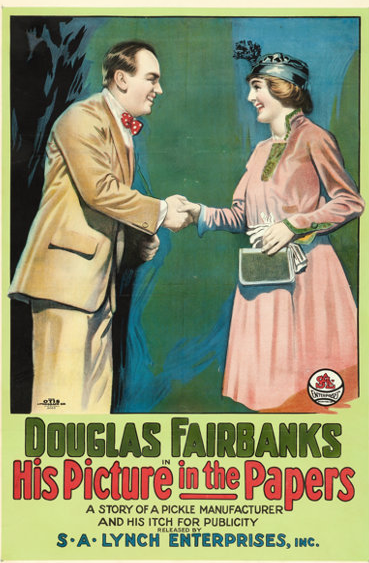
Stephen A. Lynch was born in Asheville, NC, on September 3, 1882. A sportsman and former college baseball and football coach, he was sometimes referred to as known as S.A. or “Diamond Lynch.” In 1909, he bought into an Asheville theater house, and as the popularity of moving pictures spread, he purchased other theaters and created a movie distribution syndicate, S. A. Lynch Enterprises. He leveraged his block of theaters to become a major shareholder in Paramount and subsequently established Southern Enterprises to counter the regional dominance of First National. The “Battle of the Theaters” over film distribution rights became national news in 1921 when the Federal Trade Commission filed an antitrust suit against Lynch and others.
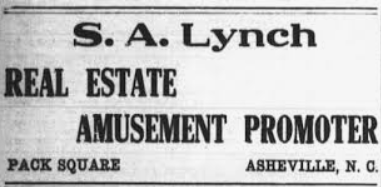
He retired to Miami Beach and began developing Sunset Islands in 1925. He also developed Daytona Highlands in Daytona Beach and Whitfield Estates in Sarasota. When Paramount experienced financial difficulties in the early 1930s, he took over 30 movie theaters across Miami Beach and Dade County. In his later years, he moved to Monte Carlo, but returned to Miami to seek medical treatment and died at the Miami Heart Institute on October 4, 1969.
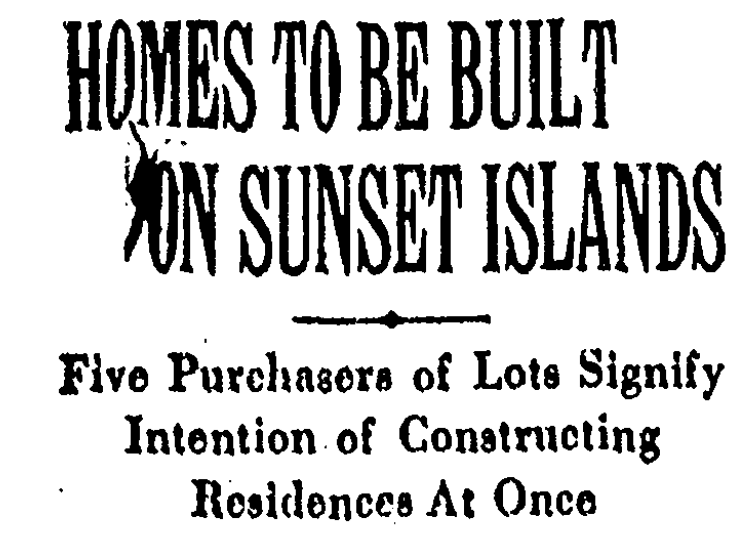
Development of Sunset Islands
Sunset Islands Company was established in 1925 to develop four islands into a residential community. While the area was platted in the same year and the Sunset Canals dredged in 1926, the islands could not be developed until the bridges were constructed between 1927 and 1929. Construction of residences was further delayed until 1936, due in part to Carl Fisher, who wanted to thwart competition of land sales by the Sunset Islands Company. Fisher widened the canal between the islands and the mainland, creating Sunset Lake and was able to use his influence to delay applications for building bulkheads and filling in the area for land improvement. The other factor in the delay was a downturn in the real estate market.
By March 15, 1936, the Sunset Islands development had resumed. Lynch told the Miami Herald that “. . . the islands were held off market until this year, when conditions deemed that the property be offered for public sale.” The article also noted that five lots had been purchased with the intention of immediate construction of residences.
Three years laters, combined construction costs on Sunset Islands totalled over 1.2 million dollars. The front page of the Miami Herald real estate section showcased the houses. Prominently featured was the residence of William A. and Lura Titus Fisher.
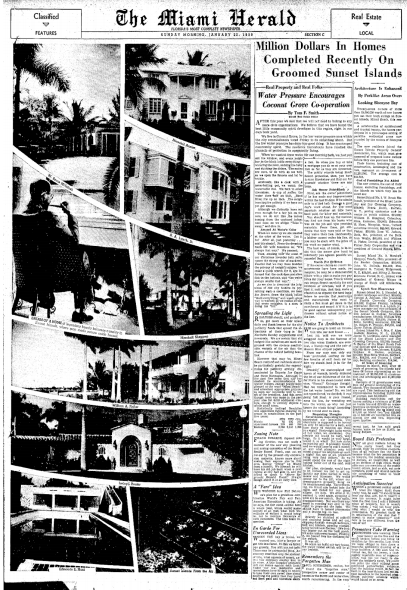
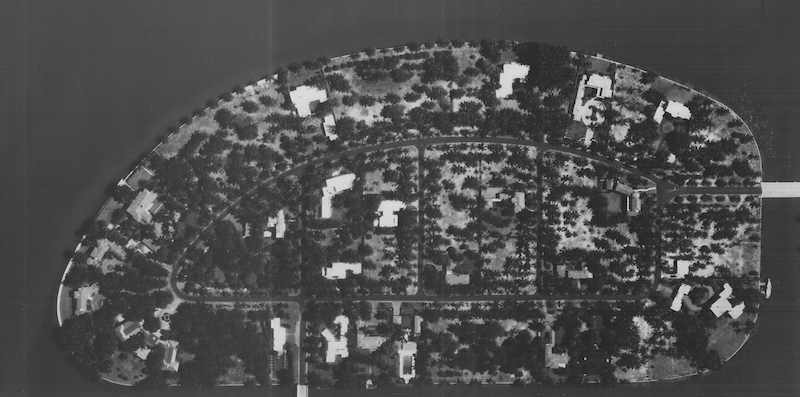
Above: Sunset Island 1 aerial, taken 1941. Fisher house is visible on the left of the photograph.
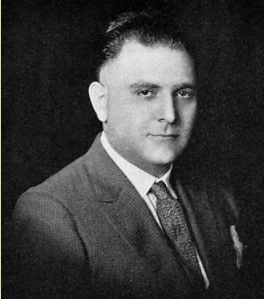
The Owner: William A. Fisher
W. A. Fisher was a president of the Fisher Body Corporation and vice president of General Motors. He was born in Norwalk, Ohio, on September 21, 1886, the third of seven brothers who would dominate the nascent automotive industry. The two eldest brothers moved to Detroit and worked for the C. R. Wilson Company, a manufacturer of horse-drawn carriages that was transitioning to building automobile bodies. They learned the trade, and in 1908, secured financing from their uncle to found the Fisher Body Corporation. The younger brothers, including William, moved to Detroit and joined the business.

By 1914, Fisher Body was the largest auto-body manufacturer in the world having produced 370,000 car bodies for Ford, Cadillac, Studebaker, Buick, Oldsmobile, Packard, and Chevrolet. At its peak, the company employed over 100,000 workers in forty plants, including the Albert Kahn-designed Fisher Body 21 in Detroit. The brothers sold sixty percent of the company to General Motors in 1919. They sold the remaining stake in 1926, and Fisher Body became the coachbuilding division of GM, where William Fisher became vice president. He resigned from GM in 1944, then he and his wife, the former Lura Titus, devoted much of their time to philanthropy. Fisher died in 1969 and Lura Fisher in 1976.

The Fisher Body Corporation built one of the signature Art Deco buildings in the nation. Designed by Albert Kahn in 1928, the building received a silver medal from the New York Architectural League in 1929.
Its three-story and barrel-vaulted lobby was constructed with forty types of marble and decorated by Hungarian artist Géza Maróti. The sculpture on the exterior of the building was created by Maróti, Corrado Parducci, Anthony De Lorenzo, and Ulysses Ricci.
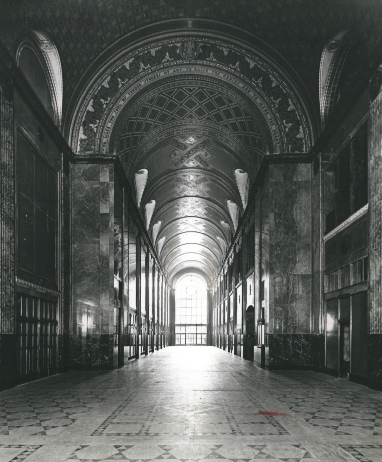
The Architect: Carlos B. Schoeppl
Carlos B. Schoeppl was born in 1898 in Comfort, Texas. He studied at the Ecole des Beaux Arts in Paris and the Royal Academy in London. He first practiced in Houston and San Antonio, Texas. Two of his Houston commissions have received recognition: The Fred J. Heyne house is listed on the National Register and the Bryan-Chapman is designated with a Texas Historical Marker.
In 1926, he traveled to Jacksonville, Florida, to convalesce from an illness and decided to set up practice in Florida to take advantage of the building boom. He came to Miami Beach in 1929 and entered into a partnership with Arnold Southwell in 1931.
From a small office at 527 Lincoln Road, they moved across the street to 528 Lincoln to accommodate the growth in commissions. At the height of their practice, the partnership employed fifteen men in designing houses, hotels, stores, and apartment buildings.
By 1935, their practice was receiving national press. Print Magazine featured them in an article titled “Profits from Small Houses (To This Office Come . . .)” that showcased Southwell’s own residence while the American Architect published a residence designed for J.E. Yonge in an issue devoted to Miami Beach architecture. The latter journal praised Shoeppl and other Miami Beach artists for their ability to define “American Architecture” by “cleverly expressing the phrase in terms of building design.”
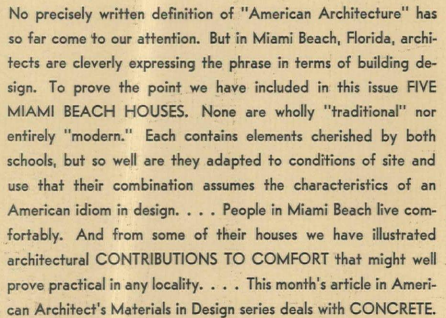
A year later, Schoeppl and Southwell dissolved their partnership. In 1937, he designed the Sunset Island residence for William and Lura Fisher.
Schoeppl moved his practice to Clearwater and formed Carlos B. Schoeppl & Associates in 1969. The focus of his Clearwater practice was the design and construction of motels. Schoeppl died in 1990 at the age of 91.
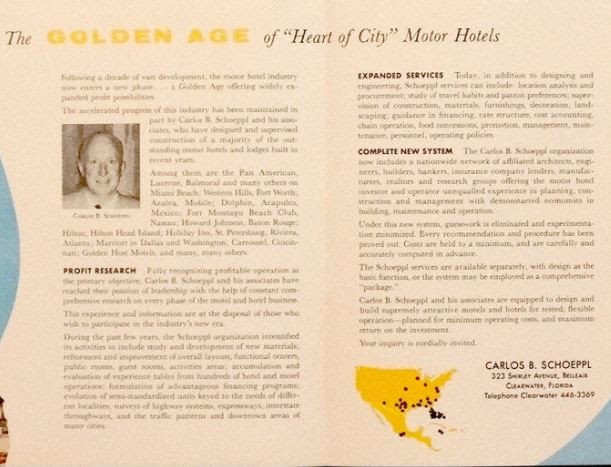
The Residence
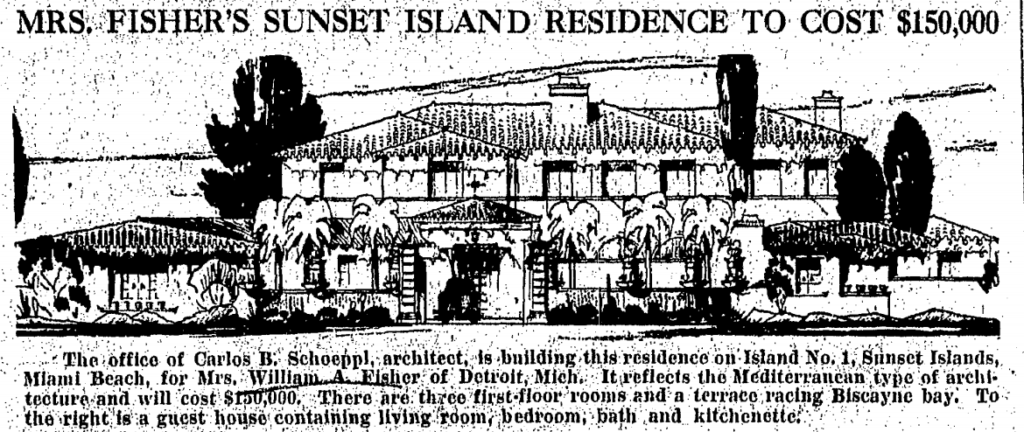
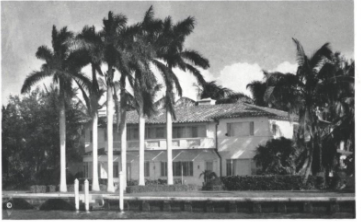
Announcing the construction of the W.A. Fisher residence on September 19, 1937, the Miami Herald called it “one of the major residential projects in the country.” Designed by Carlos Schoeppl in the Mediterranean style, the house was built using concrete block construction by William F. Bonsack with other building materials supplied by Lindsley Lumber Company.

From the street, the estate is entered through decorative pylons onto a circular drive. A photograph from the 1950s and 60s taken by the County Appraiser’s Office shows the approach.
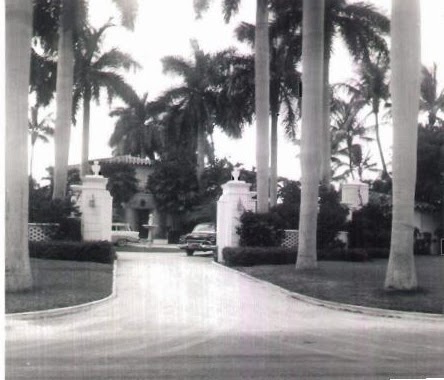
To the right of the gate is a guest house and to the left is a one storey wing of the main house with a three car garage and maids’ quarters. A diagram drawn by the County Appraiser’s office provides a site plan.
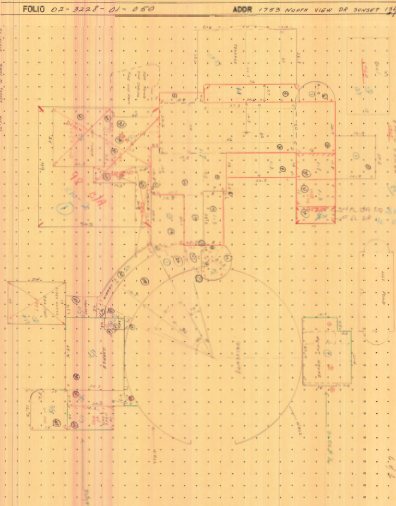
A detail of the garage from a midcentury photograph.
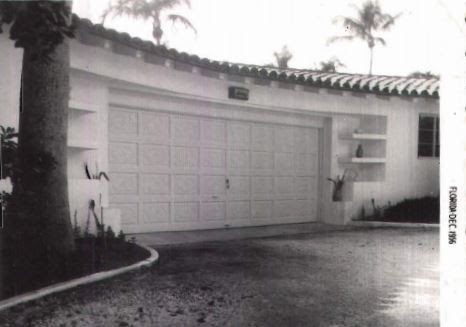
In the center of the courtyard is a fountain on axis with the main entrance.
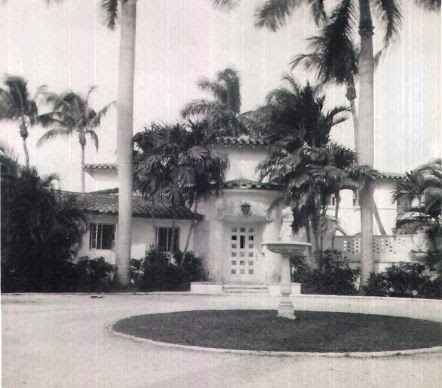
The main rooms on the ground floor face Biscayne Bay and open on a terrace.
On the second floor, three of the house’s bedrooms open on a balcony.
The house was photographed in 1939 by noted photographer Samuel Gottscho whose work is in the special collections of the Library of Congress. With his partner, William Schleisner, Gottscho documented work by architects, sculptors, and artists as well as several major publications including House Beautiful and Home and Garden. Two color pictures of the W.A. Fisher house are part of this collection.
The house became synonymous with Miami Beach architecture. It was featured on the South Bay Cruise of the Gray Line tour boats, and its Biscayne Bay facade was featured on a postcard.
Enlargement of the postcard description of the house.
Properties built by the Fisher family are still largely intact in Miami Beach and Detroit. Seen below are just a few of their Detroit homes that have been lovingly restored and are designated historic. These homes are of such beauty that they truly have stood the test of time. They remain sumptuous, luxurious, and prime for the most discerning of today’s titans.
Charles Fisher Mansion, Detroit, Michigan, designated historic as part of the Boston-Edison Historic District
Fred Fisher Mansion, Detroit, Michigan, designated historic as part of the Boston-Edison Historic District
William A. Fisher House, built 1916, designated historic as part of the Boston-Edison Historic District
[Illustrations are from online sources, County appraiser’s office, and Miami Beach building office. They are included here for educational purposes.]
Sign the Petition to Save 1753 North View Drive: Click Here
